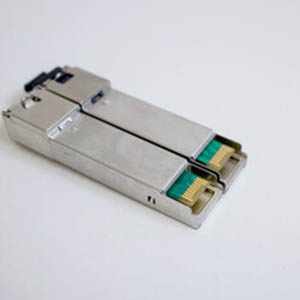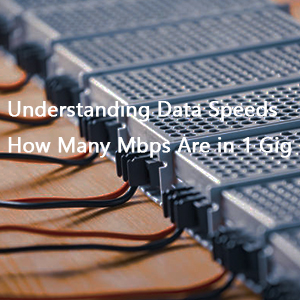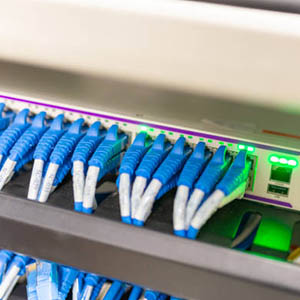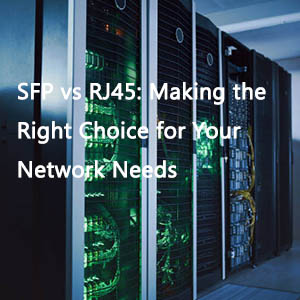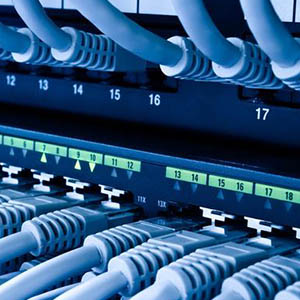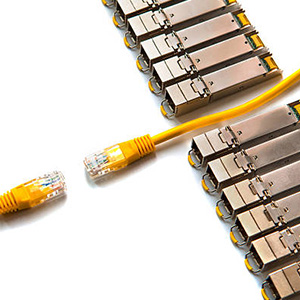Have you ever wondered what technical secrets are hidden behind those seemingly simple network connections? Today, let us step into the world of fiber optic transceivers and unveil its mystery.
Table of Contents
- What is an Optical Transceiver?
- Optical Transceiver Types
- Structure of an Optical Transceiver
- Optical Transceiver Applications
- The Main Parameters of Optical Transceiver
- FAQs
What is an Optical Transceiver?
An optical transceiver, synonymous with a fiber optic transceiver or optical module, is a compact device that harnesses the power of fiber optic technology for the transmission and reception of data. The term “transceiver” is a portmanteau of “transmitter” and “receiver,” indicating that an optical transceiver typically includes both an optical transmitter and an optical receiver within a shared circuitry or a unified housing.
These transceivers are indispensable components of optical network equipment, equipped with electronic elements that condition and encode/decode data into light pulses, subsequently transmitting them as electrical signals to their destination.
To emit data in the form of light, transceivers employ light sources such as VSCEL, FP, DFB, and EML lasers, which are governed by electronic components. For the reception of light pulses, they utilize photodiode semiconductors like PIN or APD.
Optical Transceivers Types
Optical transceivers are categorized into various types based on different criteria to accommodate diverse requirements. Primarily, classification is based on form factors.

Classified by Transceiver Form Factors
- 1×9 Transceivers: Characterized by a single row of 9 pins, these transceivers have largely been phased out in favor of more contemporary types like SFP or SFP+.
- GBIC Transceivers: Gigabit Interface Converters, known for their hot-pluggable capability, are now relics found primarily in outdated networking equipment due to their larger size.
- SFF Transceivers: Small Form Factor transceivers, with 2×5 or 2×7 pins, are more compact than their 1×9 counterparts but do not support hot pluggability.
- SFP (mini-GBIC) Transceivers: Small Form Pluggable transceivers have become the most successful and popular form factor in the industry, with subsequent models building upon and enhancing their design.
- SFP+ Transceivers: An advancement of SFP, supporting higher speeds like 8G and 10G, commonly referred to as 10G SFP+.
- XFP Transceivers: Once briefly popular, these have been largely supplanted by SFP+ due to their larger size and higher power consumption.
- SFP28 Transceivers: An upgrade to SFP+, supporting speeds of 25G to 28Gbps, predominantly used in 25G Ethernet CPRI and data centers.
- QSFP Transceivers: Quad Small Form Pluggable, offering a 4-lane signal for a combined 40Gbps speed.
- QSFP28 Transceivers: An evolution of QSFP, supporting speeds of 4x25G or 4x28G, versatile for modern data center applications.
- CFP Transceivers: Defined by the CFP MSA, supporting 40G/100G speeds with a substantial physical footprint.
- CFP2 and CFP4 Transceivers: Successive iterations offering smaller sizes and lower power consumption.
- CXP Module: 120 Gb/s 12x Small Form-factor Pluggable, reaching 120Gbps through 12x10G lanes.
- CSFP Transceivers: Compact devices with double bandwidth capacity at some port density, featuring two BOSAs in the SFP size.
As the demand for high-speed connectivity escalates, newer form factors like SFP+, QSFP+, QSFP28, and QSFP-DD are gaining traction and dominating the market landscape.
Structure of an Optical Transceiver
Taking the ubiquitous SFP/SFP+ as an example, an optical transceiver is composed of several integral parts. Similar structures can be found in other variants such as QSFP-DD, QSFP28, XFP, QSFP, CFP, CFP2, and GBIC transceivers.

| 1 | Latch |
| 2 | Optical Receiver |
| 3 | Optical Transmitter |
| 4 | Transceiver Shell |
| 5 | Label |
| 6 | Dust Plug |
| 7 | Spring |
Optical Transceiver Applications
Fiber optic transceivers are omnipresent in wired networking applications, including Ethernet, Fibre Channel, SONET/SDH/ONT, CPRI, FTTx, and InfiniBand. They are deployed across platforms like Ethernet switches, routers, firewalls, network interface cards, and fiber media converters.
The Main Parameters of Optical Transceiver
Key parameters include Data Rate, Transmission Distance, Central Wavelength, Optical Transmit Power, Receiving Sensitivity, Fiber Mode, Connector Type, Extinction Ratio, and Eye Diagram, each playing a critical role in the performance and compatibility of optical transceivers.
- Cleaning Optical Transceivers: Regular cleaning is essential to maintain signal integrity and power levels. Use fiber optical cleaner tools following the provided steps.
- Mode Compatibility: Single mode and multimode transceivers are not interchangeable due to differences in laser wavelengths and design.
- HS Code for Optical Transceivers: The most common HS code for US customers is 8517.62.0090, but variations may apply. Consult local customs authorities for specific codes.

